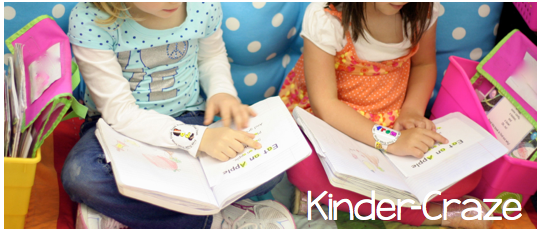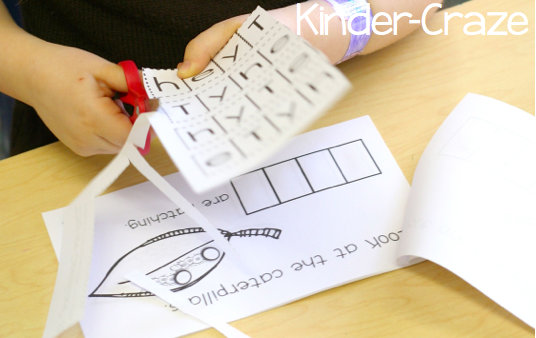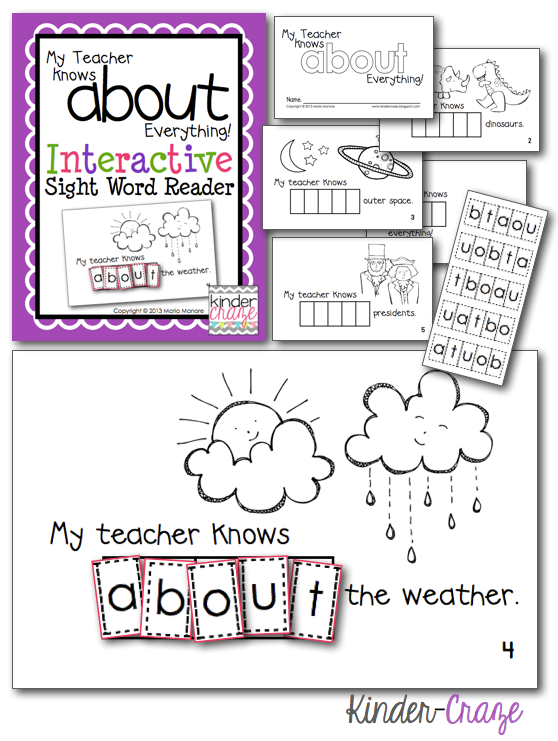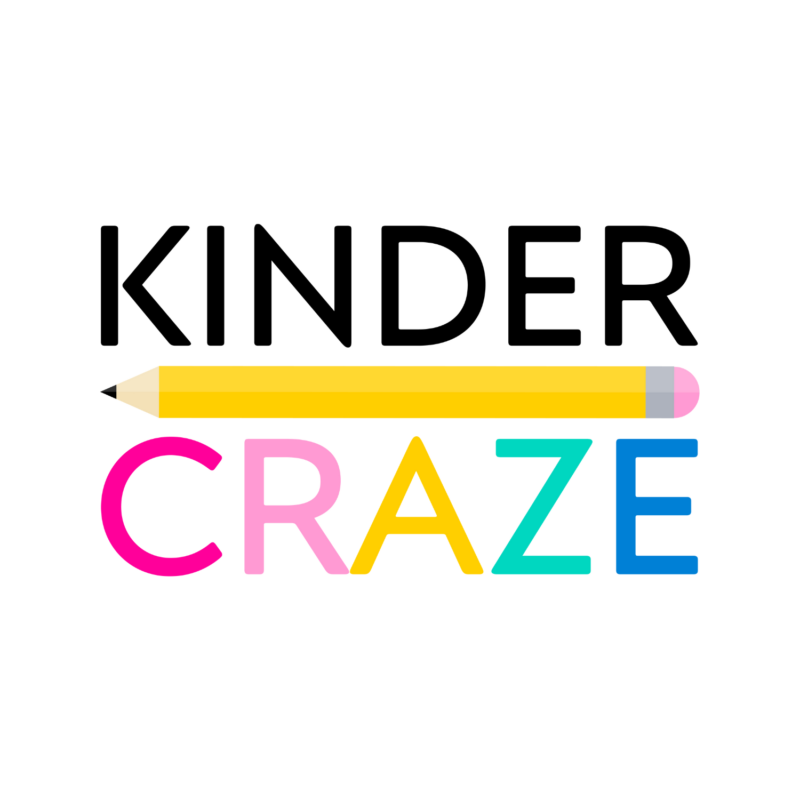

This post contains affiliate links. I earn a small commission each time someone makes a purchase through one of my links, which helps to support the blog.
Welcome to the Summer Book Study! The fabulous ladies at Freebielicious are spearheading a book study on The Next Step in Guided Reading by Jan Richardson as we read, reflect, and share our experiences. Each week a few different Freebielicous members will rotate playing hostess. Other bloggers are welcome (and encouraged) to link-up and share their thoughts and experiences along the way. At the end of this post you will find a link to follow and join with all of our amazing book study participants.
Since I teach half day Kindergarten, Guided Reading is one of MANY important items that gets squeezed in during my very short and busy day. I know the limitations of my schedule (and students) and I often have to find creative ways to squeeze in Guided Reading.
If you are just beginning to implement Guided Reading in your own classroom, it is important to keep in mind that every teacher’s system is different. Ultimately, you will have to find a fit that works best for you and find reassurance in the fact that you are trying your best. We all start with baby steps. I am certainly not an expert and the system I use is not likely to be characterized as the ideal. It works in my classroom setting and I am happy to share my process and methods with you we study Chapter 1: Preparing for Guided Reading.
The class needs to be engaged in some type of literacy activity while you meet with students for guided reading. I used to be a literacy center kind of gal, but it was a challenge. Some of my centers took too long, others were completed too quickly, and there was always a myriad of questions from the class as I tried to meet with small groups.
Two years ago, I made the switch from traditional literacy centers to the Daily 5 and I haven’t looked back. Unlike literacy centers, there is very little preparation involved. My students are taught the procedures (slowly) and they know exactly what to do during our literacy block. I do not introduce all 5 literacy activities at once, and the class does not get a choice about what activity they want to do. Everyone does the same activity and it is one that I dictate to them. I’ll share more about my timeline a little bit later…
The success of any classroom activity depends heavily on classroom management and the establishment of procedures. You do not want to have a stream of students interrupting your meeting time with small groups for Guided Reading instruction Fortunately, Gail Boushey and Joan Moser outline exactly what teachers should do to establish strong routines during Daily 5 time. I do not always move at their suggested brisk outline (I go VERY slow), but the sisters lay out great expectations and emphasize the importance of students doing literacy tasks INDEPENDENTLY without reminders from the teacher to stay on task.
In the fall, it seems to take FOREVER before my students are able to master Read to Self and maintain enough stamina for me to finally pull a single guided reading group. Seriously. Forever.
Here is a brief overview of my timeline for the first few months of school:
Week 1: Teach general classroom routines, introduce Read Aloud
Week 2: Launch Read to Self
Weeks 3-7: Build stamina for Read to Self, begin DRA testing. By this time, my students generally have a stamina of 25 minutes. Like I said, progress is SLOW.
Week 8: Begin Guided Reading!
It takes me an average of 25-30 minutes to meet with a group of students for Guided Reading (more on what happens in each group will be shared later in this book study). Once the class has built a stamina of 30 minutes or more of Read to Self time, I pull one group at a time for Guided Reading (if I have 5 groups in the class, it takes a full week to meet with each group one time).
I am the kind of teacher that likes the classroom to be quiet and PEACEFUL. Especially when I am talking with students. Part of the reason it takes my students so long to build a 30 minute stamina during Read to Self is because I follow the Sisters advice and only extend their reading time when the class had demonstrated that they are ENGAGED in reading for each minute increment of the process.
Once the class has mastered Read to Self, they learn the process of Read to Someone. Kids are social and they LOVE reading books with a friend. I use this social joy as leverage (and bribery) to keep my class on task during Daily 5/Guided Reading time. Read to Self becomes the reward for a job well-done. If the class stayed on task while I met with a Guided Reading group, everyone gets to work on their stamina for Read to Someone. If we had issues during Guided Reading, the class loses the privilege of Read to Someone time. Similarly, if poor choices are made during Read to Someone time, this privilege will be lost the following day. I have found this to be a highly effective motivator for encouraging positive behavior literacy choices.
 |
| Read to Someone is a privilege in my kindergarten classroom |
As students master these two literacy activities, I slowly roll out the rest of the Daily 5.
Word Work is the next process added to the routine, My Interactive Sight Word Readers are PERFECT for Word Work because students cut out, unscramble, and glue letters to spell a targeted sight word on each page of the emergent reader. The book is then added to each child’s book box. My kids love these books because they have a hand in creating them. I love the books because they “just right” for my young readers.


If you love the books as much as so many other kindergarten teachers do, hop on back and shop some more. For an amazing value, save over 45% when you buy the Bundle of Books!
Once I have successfully launched Read to Self, Read to Someone, and Word Work; we maintain those classroom routines for a few months. I teach my students the process of writing workshop in January and launch Work on Writing as a sustained independent activity in February. I begin the Listen to Reading component in February or March.
Jan Richardson emphasizes the importance of eliminating all unnecessary interruptions as you meet with Guided Reading groups. Several teachers use cute accessories or gimmicks such as tiaras or the use of caution tape as a visual reminder that they are not to be interrupted while they meet with students for Guided Reading. I think those ideas are so clever but I do not use them in my classroom. Instead, I make it very clear to my students right from the beginning that I often have meeting with my friends (teachers or other students) and that the person I am meeting with deserves my best attention. I tell my students that I only have meetings when I have something important to talk about and everything else just has to wait until the meeting is over (this is immediately followed by the disclaimer that they are permitted to interrupt for an emergency…. we discuss possible emergencies that would warrant interrupting a meeting).
I have found that “leveling with” my kindergarten students and letting them know the importance of our meetings is often enough to curb any issues with interruptions. Occasionally, someone will slowly approach my desk to ask a question of inform me of a non-emergency. During those occasional moments I am pretty no-nonsense. I keep eyes focused on the group in front of me. As the interrupter draws closer, I shake my head to indicate that I am not available to talk. If the student continues to approach me, I raise my hand and give my very best “talk to the hand” motion. I don’t use any verbal words, but my body language makes it very clear that their message is not important and will not be acknowledged during this time. Most students slink away without saying a word to me.
As you can imagine, it is very difficult to find the time to meet with multiple guided reading groups in a half-day setting. Especially when my guided reading sessions last 30 minutes each. I have resorted to a creative (and unconventional) method of meeting. I train a few parents each year in our classroom calendar routine. These parents are scheduled to come into the classroom one day a week and work lead the class in calendar. They update the calendar, count days of school, read a story to the class, and so much more. Each of these parents observes how I run the classroom calendar and a list of tasks and activities to lead the class in during this daily routine. I use this opportunity to pull another group of students for Guided Reading instruction while a classroom parent keeps the rest of the class engaged. I am so fortunate that my principal approved this little plan of mine. It has been so helpful in providing the class with an extra little boost in instructional time.
 |
| I’m not the only adult that’s capable of leading the classroom calendar. Just a little trick I employ to make more time for Guided Reading. |
Now that you know a little about how I prepare for Guided Reading each year, hop along to one of the blogs below to read more ideas (or link up your own!)
I will see you next week when I share my experiences with Assessment and Grouping!
Are you loving this book study as much as I am?


I’m a former kindergarten teacher turned work-from-home mom. I still love sharing ideas and resources to make teaching easier, so you can focus on what really matters in the classroom. When I’m not working on the blog, you’ll find me chasing kids around the house with a cold cup of coffee in my hand (some things never change even once you’re out of the classroom!)

©2021 Kinder Craze. All Rights Reserved.

13 Responses
So I just had an aha and I’m such a dummy moment while reading this. I don’t know why I have never thought about calendar time as a time to meet with students. I have an assistant that is with me during this time. I guess I need to learn to give up some control. I am loving this book!
Hi Kerri,
Delegating the calendar routine to someone else has been a LIFESAVER for me. I hope you find it equally successful.
I do like the idea of incorporating parent volunteers to assist with some of the daily routines that I usually do. I have found though in the last few years that it is harder to get parents to volunteer. So many have to work now. Do you have any suggestions as to how to get them in?
I also like that you take 8 weeks to get this all going like a well-oiled machine. That may help me as I struggle to get all the individual testing done on my kids and fitting everything in.
Hi Beki,
I am very fortunate to teach half-day for exactly this reason. Many of the moms in my classroom only work part-time outside the home (or not at all). Even if you can just get one parent that is willing to come in once a week, it will make your life easier.
As for the 8 weeks, absolutely! It takes that long for a kindergartener to start to figure out what school is all about. It is so much better to go slow and build a solid routine than to rush just to feel like you are meeting the daily 5 schedule. It takes FOREVER to test that first round in the fall. Best of luck this coming fall! Hopefully the few tips I shared were helpful to you!
I love daily 5. I wish they had written their book 15 years ago when I first began teaching. Their training method is spot on for first grade. I am going to share this with my k friends as they all struggle with “stamina”
jessica
Wow! I was hired this past year in October and we have half day Kindergarten as well. The book study was this same book and I never had a chance to fully go through the book but implemented it as much as possible. Now this coming year Daily 5 was thrown at us for half day Kindergarten and after reading your study for chapter one I am feeling a bit more at ease as to what I should do for next year! Thanks soo much for your expertise:)
You’re welcome Alexis! I am not an expert at anything, but I am always happy to share what works in my classroom. Half day can be stressful (from a time perspective). Once you get into the groove of Daily 5 (or Daily 1, or Daily 2…) I’m sure you will love it!
I love how this book so closely relates to the Daily 5. Your bundle of books looks amazing. I can’t wait to purchase these for my kinders in the fall.
Guided Reading and Daily 5 do seem to go hand-in-hand! While you wait to purchase the Bundle of Books, consider becoming a Kinder-Craze Facebook fan. I have been known to give a few books away to fans that have been on Facebook at just the right moment 🙂
http://www.facebook.com/kindercraze
Thanks Maria for this post. I really want to better implement this in my classroom this year. I will look forward to reading your blog as always! Oh, what is the book by Debbie …..? maybe Diller? that I read alot about on teacher’s blogs?
Hi Maria! I am new to the blogging world and I was so excited to find your blog! I am also a half day Kindergarten teacher. We started implementing The Next Step in Guided Reading 2 years ago. I absolutely love it! I have also been wanting to start the Daily 5 in my classroom but I have been struggling with how to do it in a half day setting. Your suggestions were great! I am definitely going to try it next year because you’re right, the literacy centers just aren’t cutting it!
Thanks again!
Tess
I really like your guided reading posts, but I did want to leave this comment: Talk to the hand is a bit rude, and if you don’t take care of their problems, some kids will handle the problems themselves. Having been ignored, you have not CYAed. You leave yourself open to trouble. What’s more, it is published as routine on a blog. Additionally, kids can do calendar themselves. It is not necessary for an adult to do it. My kids start doing calendar as soon as one child is capable, and we never look back.
I completely understand your hesitation with the expression “talk to the hand,” I know that students sometimes have problems that need attention immediately so I would spend time talking to my class about important and unimportant things they might want the teacher’s attention for during guided reading. Most teachers can figure out immeditately by a student’s expression and body language which matters are urgent and help those students as needed. As for the unimportant matters that students receive a hand from me telling them to halt, I usually speak with those students as soon as I am finished with my group. If it was an urgent matter I deal with it, if it was a minor matter (like 95% of student interruptions) I would talk to them about a better way to solve their problem without a teachers’s help. Independence is another skill we teach in kindergarten.
As for calendar, wow! I think it is amazing that you have trained your students to lead calendar independently. I am fortunate enough to have a good base of volunteers so my system works nicely in my classroom.